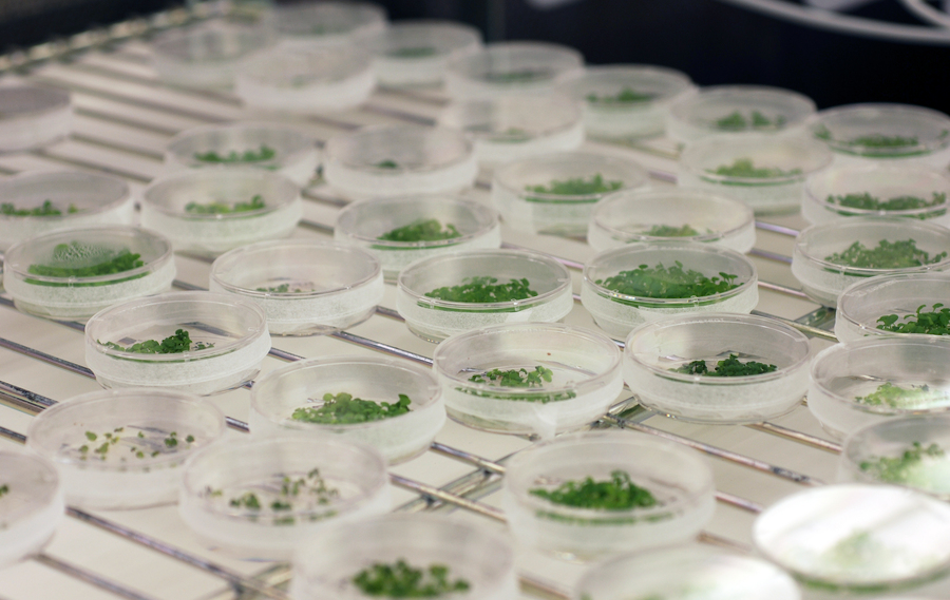Five common misconceptions about GMOs explored and explained by geneticist James Lloyd
Genetically modified organisms (GMOs), especially plants, get a lot of hate. People – even some very environmentally conscious people – seem to fear or hate GM crops. Yet, as someone who is very worried about climate change, very worried about the human-induced mass extinction event that is happening before our eyes, and worried about the livelihoods of farmers and about those people that have so little food they go to bed hungry every night, I see GM crops as part of the solution, not something to fear. So I wanted to address some of the big myths about GM crops you see discussed on the internet and evaluate whether there really is anything to all the anti-GM hype.
And, as with many things, the reality is more complicated than advocates for either side normally admit. As a geneticist with great interest the genetic modification of plants, I wanted to dive into some of this complexity.
For the record I am currently publicly funded and in my life I have never been funded by Monsanto/Bayer. I advocate for GM technologies and applications purely because I am interested in the topic and think that it can help, in the same way that I would advocate for reducing our carbon footprint or vaccinating, because I believe they can help the world.
So let’s look at five criticisms of genetic modification that you frequently see online:
1. “Genetic modification is completely unnatural”
Probably the most common complaint about genetically modifying a plant or animal is that it is ‘unnatural’. Part of this depends on how you define genetic modification. If you define it as any change at the genetic level, like from mutations, then that is absolutely natural it happens in every seed or baby animal relative to its parents.
Often people who advocate GM crops claim that genetic modification is completely natural because genetic changes are constantly happening in crops and livestock that we selectively breed. We have been doing this for thousands of years, and it is a normal part of all farming – organic or conventional – therefore it is natural. While this is true, I fear that this is a Strawman argument.
Most people who are concerned about this “unnatural” technology in their food are really worried about the specific methods we are using today to modify crops. So it is worth explaining what those different methods are and exactly how they work.
Today, the most common way to get DNA into a crop’s genome is using a species of bacteria called Agrobacterium tumefaciens (Agrobacterium for short). Agrobacterium naturally infects plants and forms tumours on their stems – you may have seen these as swollen regions on trees you walk past – creating a home for Agrobacterium to reproduce within the plant. They do this by inserting tumour-forming genes into the plant genome.
Scientists have edited the genome of Agrobacterium to remove the tumour-forming genes that allow them to infect plants, and we can replace them with other genes we want to insert instead.
The process of Agrobacterium adding genes into plants is very natural. Normally it is just an infection on a part of a plant, like a leaf or stem, but sometimes Agrobacterium can infect a reproductive cell, such as an egg cell within the flower. When this happens, all of the offspring of that plant will carry the DNA transferred from Agrobacterium. About 10,000 years ago, an insert into the genome of a sweet potato plant was captured and is present in every sweet potato you have ever eaten.
So the act of using Agrobacterium to transfer genes is actually very natural and organic. But does the act of a researcher replacing some of these bacterial genes with other, very well characterised genes, make the process unnatural?
It is true that in nature, it would be highly unlikely that a jellyfish gene would be transferred to a plant, but scientists do this routinely so that they can mark a specific part of a plant with fluorescence for research purposes. I have done this in my research to make specific cells light up under the microscope so I can better understand where genes are being turned on.
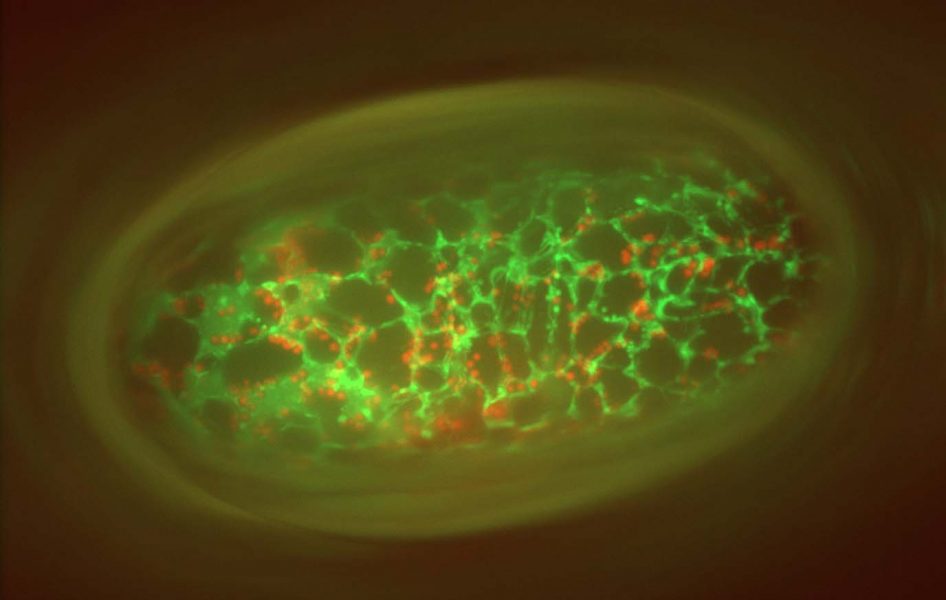
Often researchers are adding in genes from bacteria or other plants into the crop. A good example of this is a disease-resistance gene found in wild potatoes being added into cultivated potatoes. Resistance would be difficult to breed in, a process that would mix up tens if not thousands of genes, rather than just one.
In the case of bananas, they cannot be bred, so either we use genetic modification to give these crops resistance to new diseases, or they face eradication. In fact, the Gros Michel variety of banana was nearly eliminated by a fungal disease in the 1950s due to lack of genetic diversity, leading to the adoptions of the Cavendish banana nearly all of us eat today.
Personally, if we are labelling food as GMO, I think that all sweet potatoes should carry the label, because they are natural GMOs.
It is also worth noting that although it is the approved method for organic farmers, generating mutant plants using blasts of gamma radiation, causes more extensive changes in gene expression across the whole genome than does inserting a single gene with Agrobacterium. I am not overly worried by either approach, but I wanted to put this into perspective.
Another common tool for engineering plant genomes is CRISPR. CRISPR is the common name for a genome-editing tool that again uses a system stolen from a bacterium.
CRISPR was discovered when researchers noticed many bacterial genomes had the same short repeating sequences in their genomes, and that nestled between the repeats were sequences similar to the genes of a virus. It turns out that these repeating regions are part of a bacterial defence system against viral infections, a sort of bacterial immune system. The bacteria turns the whole region – repeating sequences and viral DNA – into RNA that binds to a protein known as Cas. Together this CRISPR-Cas complex binds to matching DNA in invading viruses and cuts it, rendering the virus useless.
Researchers at UC Berkeley developed this natural DNA-targeting system into a tool that can be used to edit any DNA sequence you programme it to find. Today you can introduce the Cas protein and guide RNA into practically any site in the genome, inducing a particular mutation at that specific site.
CRISPR can cause a targeted mutation in a specific gene in a plant without introducing any new genetic material. It is exactly the same as making a mutant in the traditional, organic way, except that we target the mutation to exactly where we want it, rather than inserting it randomly and having to screening an enormous number of seeds to get the exact one with the desired mutation.
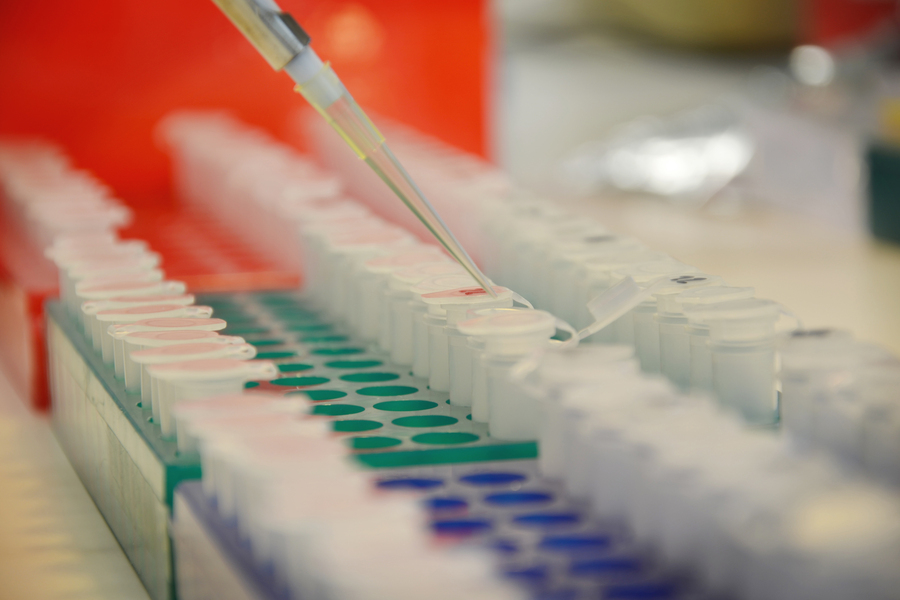
CRISPR genome editing allows for precision introduction of what otherwise looks like a natural mutation, without the need to introduce lots of new sequence via Agrobacterium. Different regulatory bodies have different views on whether CRISPR gene editing should be subject to the same legislation the same as the Agrobacterium approach (e.g. the EU) or if it is the same as the selective breeding practices we have used for thousands of years (e.g. US, Brazil, Australia) in research and agriculture.
Given that the CRISPR-induced mutations can all occur in nature, and regularly do, I personally do not think that genome editing should be given the same level of scrutiny as gene insertion technology.
2. “GMOs encourage bad agricultural practises”
GM crops are often criticised for leading to an increase in pesticide use, which can be damaging for the environment. This actually depends on how you define a pesticide. If we define it has a chemical that kills common parasites of plants, like aphids or caterpillars, then this is not true. Farmers actually use 37% less pesticide to target these pests on their GM crops. This is because many GM crops contain the genes to produce their own BT, a natural pesticide from bacteria used in organic farming.
On the other hand, overall herbicide usage to kill weeds has increased due to the introduction of GM crops that are resistant to specific herbicides. However, what is often not taken into account is that the GM-friendly herbicides are replacing old herbicides that were very dangerous and damaging to the environment. Therefore, the introduction of herbicide-resistant GM crops has actually decreased the environmental impact of herbicides in recent years.
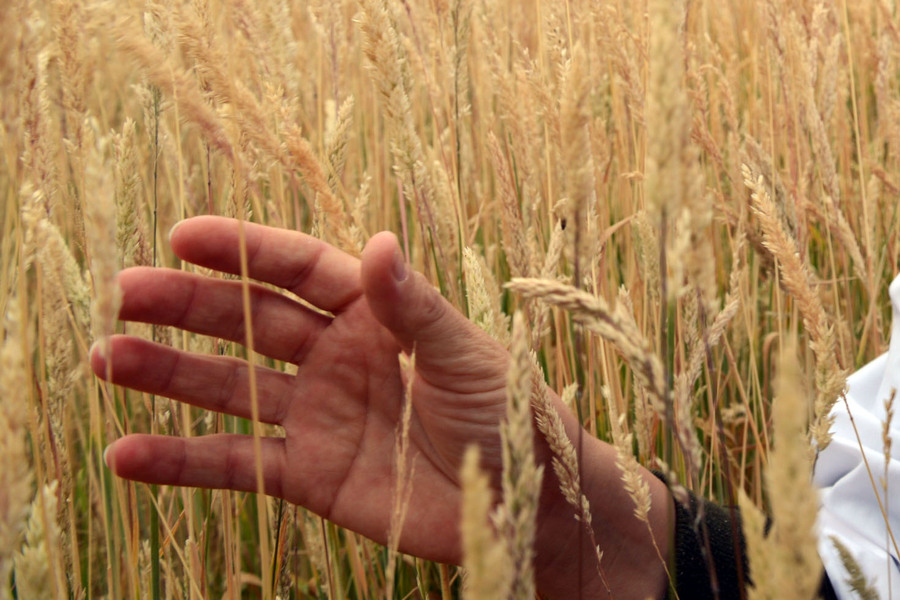
Another common worry is that using GM crops will encourage people to grow a single crop in a large area, a practise known as monoculture. But monocultures are nothing new. Neither is the loss of local varieties of crops grown in specific regions, which is often the consequence when one crop comes to dominate cultivation. Nikolai Vavilov, the inventor of seed banks, worried about this over a hundred years ago.
The reasons monocultures are increasingly popular is because they work: they allow us to feed more people for less inputs. Some crops require monocultures (e.g. olives, grapes), while for other crops it is just a way of increasing yield. There are better and worse practices for monocultures, but I think you will find few geneticists who believe that the loss of genetic diversity is a good thing for our crops. Ironically, it’s the plant breeders who are making the elite crops used in monocultures that are also the people who want to see crop diversity preserved the most.
Regardless, GM crops did not invent monoculture farming. It isn’t even clear than GM crops do increase the frequency of monoculturing, after all, GM crops increase yield, therefore decreasing the amount of land needed to get the same amount of food and leaving more land available for other uses, including being left wild. GM traits are often put into elite crop varieties because those are the varieties the larger farms are already buying, and those farms do tend to grow monocultures.
The secondary consequences of monocultures, such as the loss of local biodiversity, do need to be addressed, but this is not specific to GM crops, it applies to the whole of modern agriculture. Efforts are being made to put some GM traits into local varieties to preserve the local genetic diversity or cater to local dietary requirements. However, this is expensive work, at least partly due to the regulatory burdens, so if we want to see more of this (which I very much do), then we need more public funding for this kind of research. We cannot solely rely on the charity of billionaires like the Gates foundation to fund these excellent projects.
3. “Genetically modified organisms are bad for the environment”
Another common claim about GMOs is that they are bad for the environment. But as well as reducing pesticide use, the use of GM crops is estimated to have reduced the amount of CO2 released into the atmosphere to the same extent as removing 11.9 million cars from the roads. This is because fewer fertilisers are being added to the crops, so fewer vehicles are needed, and because GM crops allow farmers to switch to less intensive and disruptive farming practises. This is a resounding success story from an environmental point of view.
Many people have expressed concerns that GM crops or their modified genes can escape the farm and enter the environment. Well, yes, this can happen. Most crops don’t do super well outside the specific conditions they have been bred to grow in (on farms) but sure, this can happen. Just like wheat and rice varieties that farmers have been selectively breeding for over ten thousand years, GM crops could spread their genes into the surrounding environment. But there’s no particular reason to think this would be harmful.
The place where escaping genes looks to be the biggest issue is for organic farmers. Different bodies that certificate organic farms each have their own policies on what counts as an organic approved farm, including amount of GM material present, before it is decertified. In the EU, they will allow the presence of up to 0.9% GM material before decertification, the USA allows for 5% and in Australia, it is zero.
In fact, there was a recent court case in Western Australia where a farmer growing GM canola (oil seed rape) was sued because some of the seeds blew onto a nearby organic farm and as a result, that farmer lost their organic certification. In the end, the judge ruled that the GM farmer had not intended this to happen, they had not done anything improper and that the GM farmer did not hold responsibility for the body’s decision to decertify the farm.
This was, of course, controversial, and it is for each person who decided whether the court decision was right or wrong. My personal opinion is that GM crops are safe, as natural as any other crops humans have bred for thousands of years, and so should not be incompatible with organic farming. In my opinion, they would go hand in hand, if not for arbitrary regulatory distinctions.
4. “Eating GM food is bad for your health”
There is the myth that eating GM crops is directly bad for human health. Well there are a couple of ways to think about this. The difference between a GM crop and the non-GM crop is a small amount of DNA inserted into the plant’s genome. This insertion would usually increase the total size of the genome by less than 1%, while in nature, many plants vary their genome size hugely – the largest onion genome is 450% larger than the smallest onion genome, but these two species are both in the same genus.
So if it is not about the amount of DNA, perhaps we should think about the trait, what property the DNA gives the plant. For specific traits being introduced into crops, there are too many to cover each individually here. But it is important to note that over the 18 years since the widespread commercialisation of GMO produce, there is no convincing evidence of any ill effects on human health.
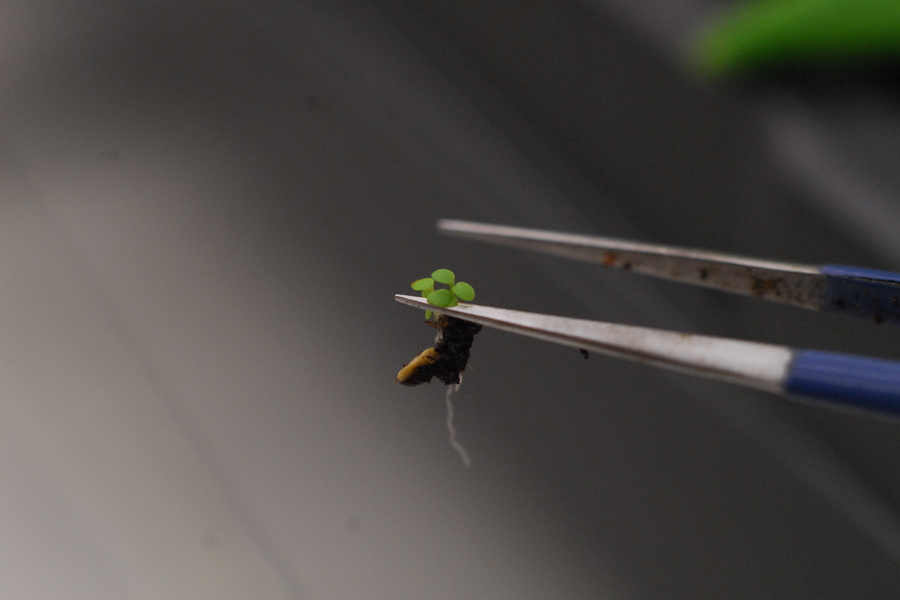
Many GMOs involve the insertion of a gene from a wild relative of the plant into the cultivated variety. This could be achieved by selective breeding but genetic modification is easier because rather than moving thousands of genes you are moving just than one or two).
The most common genes being added are for glyphosate-resistance and the BT pesticide. BT is normally produced by bacteria and their spores have been used in organic farming for decades without issue. The GM varieties produce the pesticide inside the plant, which has many advantages, such as saving people the trouble of applying the pesticide manually.
BT is not thought to be toxic or allergenic, but many other commonly used pesticides are toxic to humans and pose a risk to the farmers. So anything that reduces these treatments is a huge win for the safety, and finances of farmers. Most GM crops are used as animal feed and the evidence is in: no clear link between animals eating GM crops and adverse health effects. This is good news for our animals and for humans.
5. “Herbicides used on GM crops cause cancer”
We hear a lot about the herbicide glyphosate – also known as ‘Roundup’ – in the context of GMOs, but it’s worth noting that this herbicide is not exclusively used on GMOs. Glyphosate works by stopping plants (and some microbes) from being able to make food. It is very clever in that it specifically targets a cellular process that animals do not use, so it shouldn’t be harmful to humans or livestock. However, concerns have been raised that it may increase the risk of cancer.
Much attention has been given to whether glyphosate causes cancer. This is obviously a very serious thing, but thankfully the scientific community has performed many great studies to look into this.
Some reports have linked glyphosate to a specific form of cancer called non-Hodgkin’s lymphoma, which is a type of blood cancer, and in 2018 a US judge ruled that Monsanto must pay compensation to a man who developed terminal cancer after using Roundup in his job as a gardener. However, there is no evidence that the pesticide is linked to an increase rate of cancer generally, and the specific evidence for an increase in this one type of blood cancer is a very weak.
A lot of people have focused on the results of a recent study that analysed all the published research into the link between glyphosate and non-Hodgkin’s lymphoma, an approach known as a meta-analysis, which showed a small but significant increase in the rate of non-Hodgkin’s lymphoma after exposure to glyphosate. But I want to dive into the numbers in more detail.
The meta-analysis reported a very small increase – 8 of 100,000 people who are exposed to this herbicide in an agricultural setting would develop cancer as a result – on top of the 20 who would normally develop it due to other causes. Some publications described this as a 41% increase in cancer rate from glyphosate exposure – but let’s remember, it is 8 more cases out of 100,000 exposed people.
But, is this number even right? A deeper look into this meta-analysis and the study they based a lot of their work on, actually reveals a different story. It turns out that the authors actually picked an arbitrary dataset from one of the original studies. If they had picked any of the other numbers from the same section, which will be equally valid, then they would have found that there is no link between glyphosate exposure and this form of cancer at all, or that there is a decreased rate of cancer after exposure to glyphosate.
Even before this study came out, glyphosate was under fire. A lot of people point to the World Health Organisation (WHO) as first stating that glyphosate is a cancer-causing agent. This isn’t actually true. In fact, a sub-organisation (IARC) of the WHO listed glyphosate as a ‘probable carcinogen’. It is worth noting that the IARC also lists red meat, being a hairdresser, and working shifts in the same category – Group 2A: probable carcinogens.
In contrast, other organisations, including the European Food Safety Authority (EFSA) and the US’s EPA do not list glyphosate as a carcinogen. We have to ask what made the IARC’s rating so abnormal, given that they cite the same studies as many other organisations around the world that all came to a different conclusion. There is even evidence that the IARC had included evidence against glyphosate being a carcinogen in a draft of its report, but this was removed for no apparent reason. I will be curious to see if they change their minds in the future, because currently their assessment does not seem evidence-based at all.
Summary
Overall, GM crops have reduced the carbon footprint of agriculture and reduced the environmental impact of pesticide use, all while increasing farmer’s yields and profits. With any new technology, there is the potential for negatives. But the invention of the airplane has had a far more damaging impact on the planet and biodiversity than GM crops, which actually have the potential to do net good for the environment and for the people living on this planet.
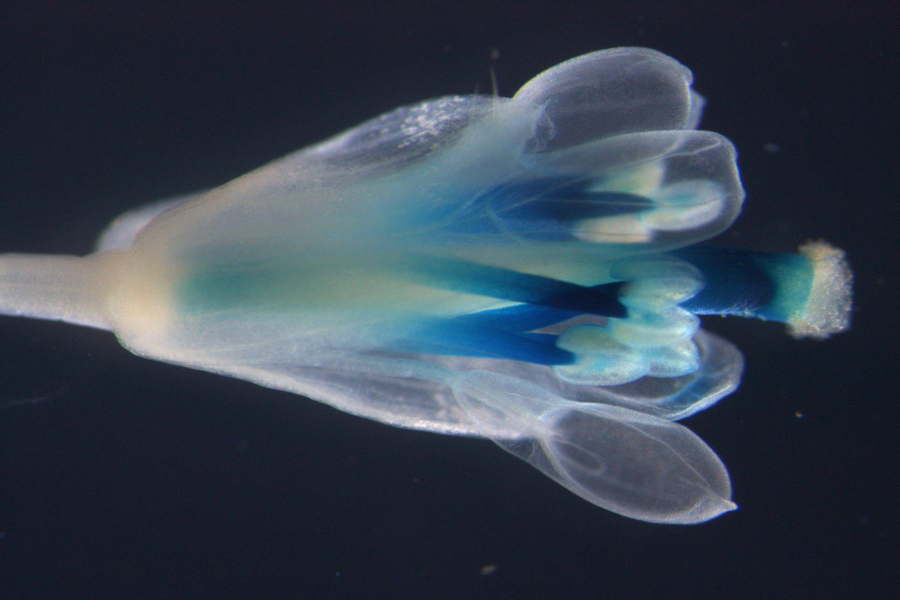
This post is the personal views of James Lloyd.
Want to know more?
- de Vos, C. J., & Swanenburg, M. (2018). Health effects of feeding genetically modified (GM) crops to livestock animals: A review. Food and Chemical Toxicology, 117, 3-12.
- Andreotti, G., Koutros, S., Hofmann, J. N., Sandler, D. P., Lubin, J. H., Lynch, C. F., … & Silverman, D. T. (2017). Glyphosate use and cancer incidence in the agricultural health study. JNCI: Journal of the National Cancer Institute, 110(5), 509-516.
- Paul, J. Y., Khanna, H., Kleidon, J., Hoang, P., Geijskes, J., Daniells, J., … & Deo, P. (2017). Golden bananas in the field: elevated fruit pro‐vitamin A from the expression of a single banana transgene. Plant biotechnology journal, 15(4), 520-532.
- Royal Society (2016) Is it safe to eat GM crops?
- Brookes, G., & Barfoot, P. (2015). Environmental impacts of genetically modified (GM) crop use 1996–2013: Impacts on pesticide use and carbon emissions. GM crops & food, 6(2), 103-133.
- Kyndt, T., Quispe, D., Zhai, H., Jarret, R., Ghislain, M., Liu, Q., … & Kreuze, J. F. (2015). The genome of cultivated sweet potato contains Agrobacterium T-DNAs with expressed genes: an example of a naturally transgenic food crop. Proceedings of the National Academy of Sciences, 112(18), 5844-5849.
- Klümper, W., & Qaim, M. (2014). A meta-analysis of the impacts of genetically modified crops. PloS one, 9(11), e111629.
- Batista, R., Saibo, N., Lourenço, T., & Oliveira, M. M. (2008). Microarray analyses reveal that plant mutagenesis may induce more transcriptomic changes than transgene insertion. Proceedings of the National Academy of Sciences, 105(9), 3640-3645.
- Mendelsohn, M., Kough, J., Vaituzis, Z., & Matthews, K. (2003). Are Bt crops safe?. Nature biotechnology, 21(9), 1003.
Featured image by ARC CoE Plant Energy Biology used under a CC Attribution-Non-Commercial-No Derivatives 4.0 International.

